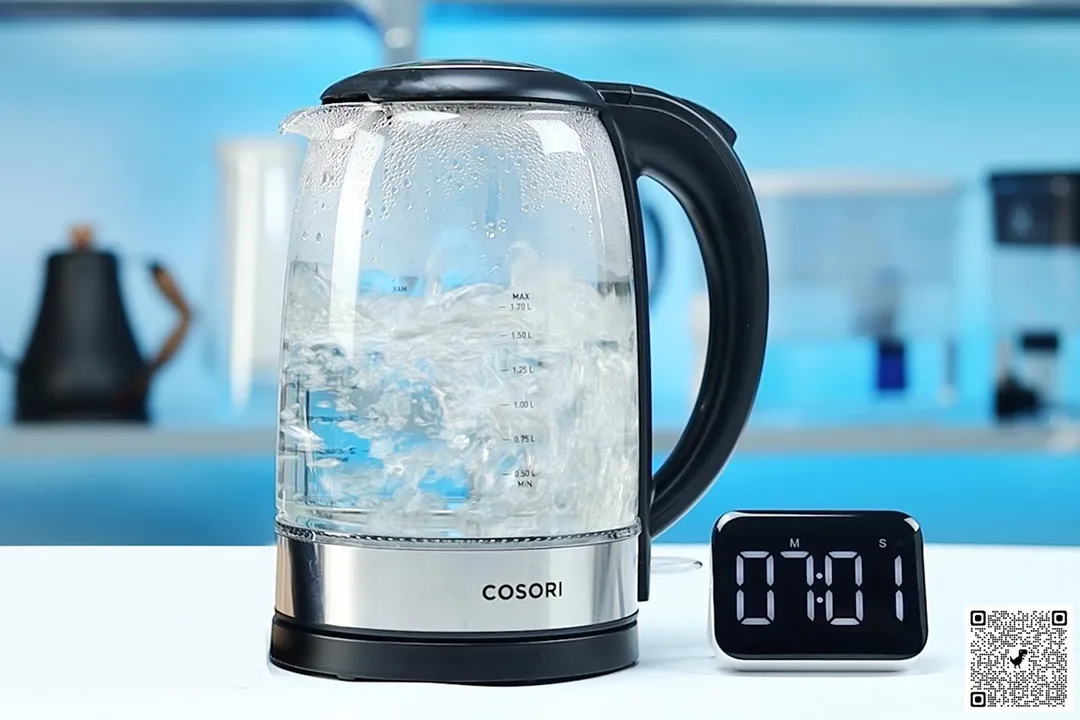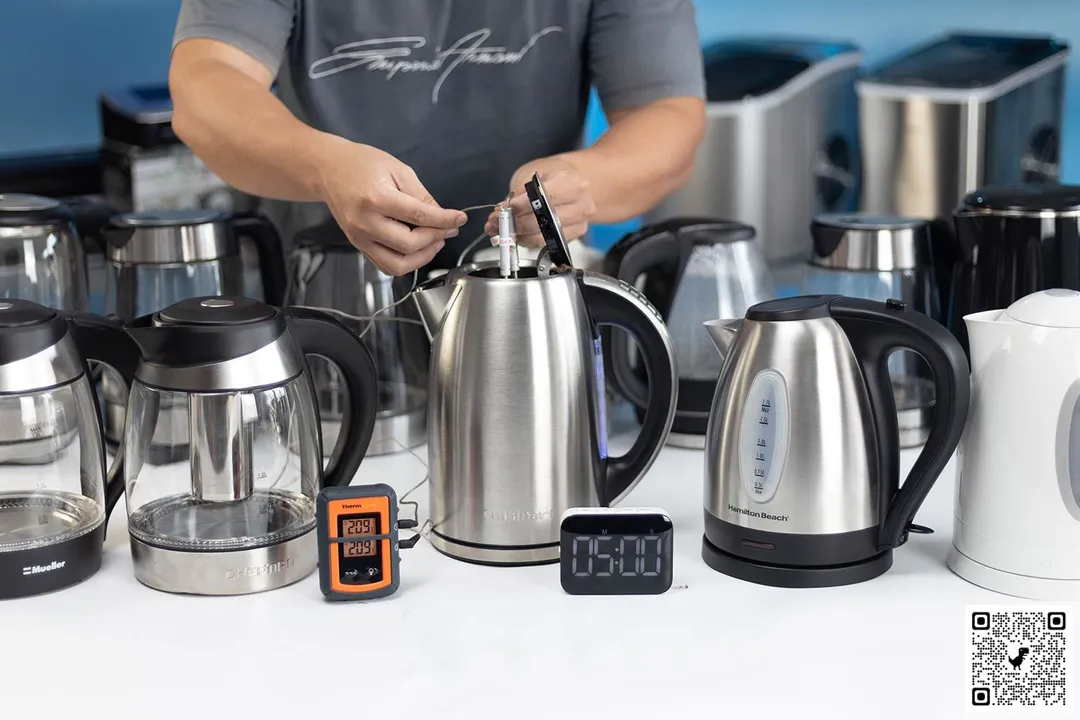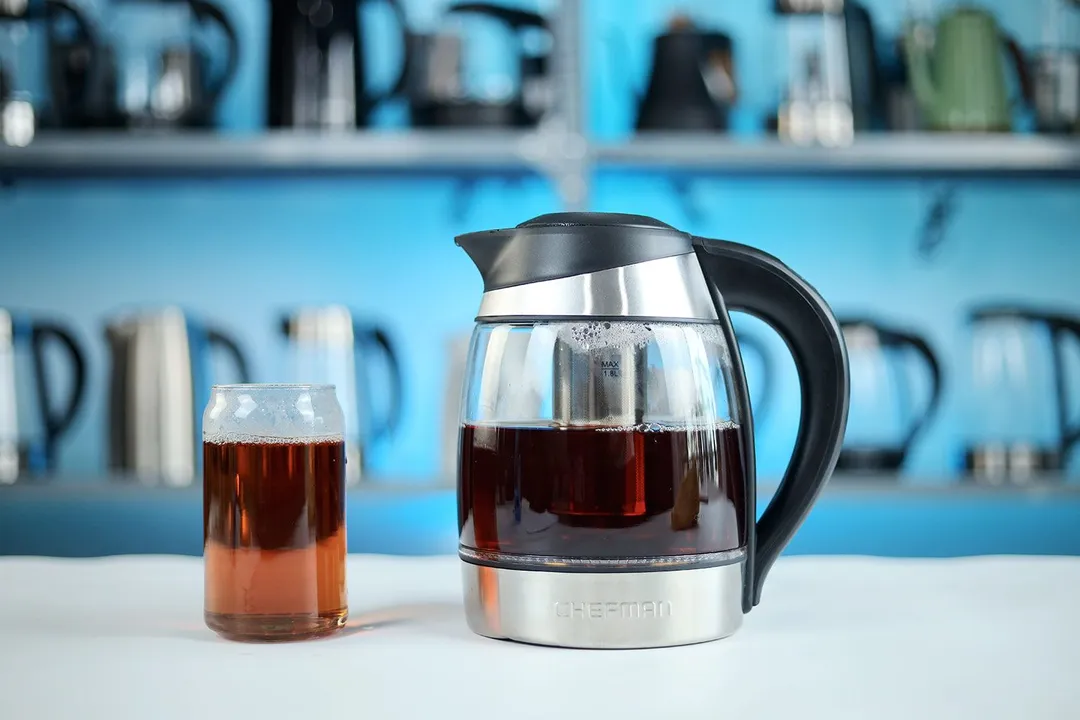Our recommendations are made independently through Research & Testing. We may receive commissions from purchases made via our links.
Why Should You Buy Electric Kettles?
Reasons why you should buy an electric kettles. Read on to find out the benefits you may have missed on this most common household appliance.
The electric kettle is probably the most common household appliance. Not many people, however, may fully realize the benefits of their electric kettle.

From handy portability, cool-to-touch exteriors, numerous safety features, and properly boiled water—if you don’t have an electric kettle, you’re missing out.
How to Ensure Proper Water Safety
Boiling water is one of the most efficient purification methods when you don’t have access to drinkable water or in the case of a service breakdown. But, it’s not just about boiling water.
According to the Environmental Protection Agency (EPA), boiling water requires a full rolling boil (212°F/100°C) for one minute and cooling before use. Boiling water is characterized as pasteurization— or killing harmful organisms such as bacteria, viruses, protozoa, and other pathogens. This is why an electric kettle, or stove top kettle, is an important addition to any household.
Even some of the best water filters including activated carbon, charcoal, and pitcher filters are not 100% effective on microbiologically unsafe water and do not kill bacteria or viruses. On the other hand, boiling water does not remove dangerous contaminants like chlorine, lead, arsenic, and nitrates, which a good water filter can.
Therefore, it’s still recommended to boil your filtered water if you are uncertain of its safety and quality. And, electric kettles are our number one recommendation for the job. With that said, let’s get to the reasons why.
Good Energy Efficiency
If you are thinking of popping a kettle on a stove top, in 2014 the U.S. Department of Energy measured the general energy efficiency of induction to be 70.7% to 73.6%, electric coils 71.9%, and gas only 43.9%.
Once again, throwing an electric kettle into the mix is like comparing apples to pears. However, its energy efficiency is quite evenly matched and the electric kettle’s handiness is second to none.
Faster per Capacity Boiling Times
According to Battery Equivalents, the amount of time to boil water on average is as follows:
Appliance | Water Volume | Boiling Time |
|---|---|---|
2500W kettle | 1 liter | 2-3 minutes |
1500W kettle | 1 liter | 4 minutes |
700-800W microwave | 1 liter | 10-12 minutes |
1500W microwave | 1 liter | 2-6 minutes |
Induction cooktop | 1 liter | 5-6 minutes |
Gas stove | 1 liter | 6-8 minutes |
Electric stove | 1 liter | 8 minutes |
Surprisingly, an electric kettle is still faster than your average induction plate, while the inefficiency of a gas stove kettle is not such a shock.
For stovetop kettles, we are more likely to boil more water than we need, and microwaves tend to be one or two cups at a time. These differences make an equal comparison difficult, but the convenience and versatility of an electric kettle still wins the day.
Convenient and Safe Shut Down
While stovetop kettles require your watchful eye or getting the timer right, electric kettles turn off automatically once the water has done a rolling boil or reached a selected temperature. This goes a long way in preventing kitchen mishaps, especially when considering the elderly, pets and children.
An Electric Kettle Boils to Correct Safety Levels
The boiling point of water changes depending on altitude or the amount of impurities. Water boils at 100°C at sea level. However, for every 150-meter increase in elevation, it drops by approximately 0.5°C.
This is where an electric kettle’s unique thermostat comes into play.
Kettles generally have a two-layer bi-metallic disk.The combined disk curves so that the faster expanding disk is on the outside, and vice versa as it cools. This is a low-cost and effective thermostat that snaps suddenly at a specific temperature.
In addition, the thermostat is isolated from the water which may not reach 100°C at boiling point. A clever design incorporated a channel—typically inside the handle—carries the steam from the top of the boiling interior down to the thermostat (often near the base).
Boil-Dry Protection As a Double Safety Feature
One problem with a steam channel and bimetallic disk design is that the kettle may fail to switch off if the lid is left open. When the lid is open, there isn’t enough steam being ducted onto the bimetallic disk.
If the kettle doesn’t turn off, it will just keep boiling until the water runs dry, and this can pose a fire hazard. So, the boil-dry protection feature is there to kick in when the water runs close-to-dry and this also acts as a back up if the automatic switch off fails
Multiple Convenient Features
1. A cordless carafe offers more leverage and it makes cleaning easier.
2. Cool-to-touch materials or even a hermetically sealed thermos kettles provide unparalleled safety for the elderly, people with special needs, small children, and pets.
3. Most modern electric kettles have a hinged pop-up lid that opens towards you thus lessening accidental contact with hot steam.
They Are Less Noisy
On average, electric kettles produce 70 dB when boiling while stovetop kettles can get up to 80 dB if they have a steam whistle. Electric kettles can even be quieter than 70 dB, especially if they are double-walled or have a tight-fitting lid.
Another reason is that electric kettles have larger heating elements that spread heat more evenly and reduce cavitation—the main source of noise when boiling. Some may even have a soundproof coating.
However, these design features will likely increase the cost of the kettle. There’s something you can do to further decrease the noise yourself: place the kettle on a rubber mat or cover the kettle with something like a tea cozy.
According to the CDC, even at 80 dB, you’ll need to be exposed for 2 hours for damage to hearing to occur. Of course, some kettles may only reach this level for a very short period of time, but quieter is always better especially if you live in a small apartment or have thin walls.
References
- https://www.epa.gov/ground-water-and-drinking-water/emergency-disinfection-drinking-water ‒ Emergency Disinfection of Drinking Water
- https://www.govinfo.gov/content/pkg/FR-2014-12-03/pdf/2014-28212.pdf#page=16 ‒ U.S. Department of Energy
- https://www.researchgate.net/figure/SUMMARY-OF-APPLIANCE-dBA-NOISE-LEVELS_tbl1_229252586
- https://www.cdc.gov/nceh/hearing_loss/what_noises_cause_hearing_loss.html ‒ What Noises Cause Hearing Loss?
About your tip
Alan Nguyen is a writer and product reviewer at HealthyKitchen101. His major in English language teaching taught him to present concise information. In addition to his cooking hobby, he values the practical aspects of household appliances.




